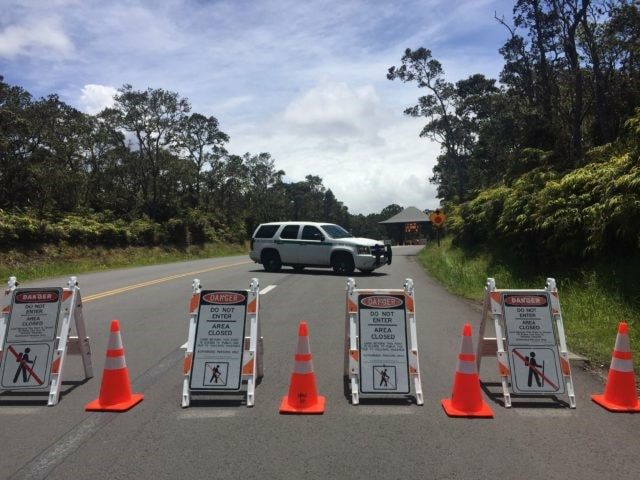
By Jason Armstrong / May 16, 2018
Losses are mounting in the hundreds of millions of dollars as Kilauea pushes molten lava through neighborhoods.
From mounting property losses and government expenses to reduced tourism dollars, Hawaii’s latest natural disaster is sending financial shockwaves throughout the Big Island.
The price tag – and the volume of human suffering – keeps climbing as the eruption approaches its third week.
Kilauea volcano’s advancing flows have destroyed at least 26 homes, left many of Leilani Estates’ 770 dwellings inaccessible and threatened to sever all road access to Lower Puna.
“The affected areas are severely impacted to zero values because it can’t be sold and it can’t be used,” said Heather Hedenschau, principal broker at Big Island Brokers.
That means up to $170 million in lost property in Leilani Estates alone, based on a review of several online sites such as areavibes.com that offer varying median homes prices of around $220,000.
Leilani Estates and the much smaller Lanipuna Gardens, the first two subdivisions to be evacuated, generate a combined $1.2 million annually in property taxes for Hawaii County, said Lisa Miura, acting real property tax administrator.
“Everything inundated would go to zero (tax liability),” Miura said. Any property with an assessed value of $500 or less is exempt from taxation, according to county law.
The county also expects to collect less from owners of properties impacted by, but not within, the inundation zone, Miura said.
Lowering those values, and accompanying billings, would require an emergency proclamation from Mayor Harry Kim, who is considering taking that action, she said.
“What we’d like to do is provide tax relief to the immediate area,” Miura said.
That will affect the main revenue source for the county, which relies on property tax collections to pay more than 60 percent of its operating costs, according to Kim’s latest budget request. Impacts will be felt not only in the coming budget year that starts July 1, but also this current fiscal year as the county expects to provide partial refunds due to lowered values, Miura said. [...]
Losses are mounting in the hundreds of millions of dollars as Kilauea pushes molten lava through neighborhoods.
From mounting property losses and government expenses to reduced tourism dollars, Hawaii’s latest natural disaster is sending financial shockwaves throughout the Big Island.
The price tag – and the volume of human suffering – keeps climbing as the eruption approaches its third week.
Kilauea volcano’s advancing flows have destroyed at least 26 homes, left many of Leilani Estates’ 770 dwellings inaccessible and threatened to sever all road access to Lower Puna.
“The affected areas are severely impacted to zero values because it can’t be sold and it can’t be used,” said Heather Hedenschau, principal broker at Big Island Brokers.
That means up to $170 million in lost property in Leilani Estates alone, based on a review of several online sites such as areavibes.com that offer varying median homes prices of around $220,000.
Leilani Estates and the much smaller Lanipuna Gardens, the first two subdivisions to be evacuated, generate a combined $1.2 million annually in property taxes for Hawaii County, said Lisa Miura, acting real property tax administrator.
“Everything inundated would go to zero (tax liability),” Miura said. Any property with an assessed value of $500 or less is exempt from taxation, according to county law.
The county also expects to collect less from owners of properties impacted by, but not within, the inundation zone, Miura said.
Lowering those values, and accompanying billings, would require an emergency proclamation from Mayor Harry Kim, who is considering taking that action, she said.
“What we’d like to do is provide tax relief to the immediate area,” Miura said.
That will affect the main revenue source for the county, which relies on property tax collections to pay more than 60 percent of its operating costs, according to Kim’s latest budget request. Impacts will be felt not only in the coming budget year that starts July 1, but also this current fiscal year as the county expects to provide partial refunds due to lowered values, Miura said. [...]

 RSS Feed
RSS Feed





